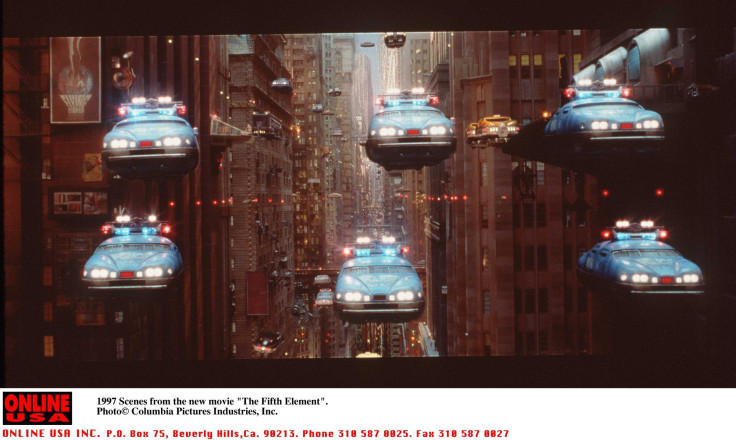Flying Cars Of The Future: Airbus Designs Electric Robot Taxi

French aerospace giant Airbus has begun developing a self-flying, electric-powered aircraft capable of autonomously carrying passengers to their destinations, according to weekly business magazine Fast Company.
The computerized plane, called "Vahana" after the mythical creatures ridden by Hindu deities, would be able to make trips up to about 50 miles at about half the travel time of conventional automobile taxis and without the use of a runway. The design was fixed with eight propellers and two sets of wings, one of which would tilt upwards to raise the aircraft like a helicopter before moving 90 degrees to propel the aircraft forward. It can reportedly reach speeds of up to 115 miles per hour and carry 1,100 pounds, but was designed for single passenger use.
Airbus expected the Vahana would be ready within a decade, but has already begun building its first prototype and was looking to begin conducting test flights by the end of the year. Earlier this week, Aviation Week & Space Technology readers chose the Vahana as the featured product most likely to be completed within the next 10 years via an online poll.
Our readers voted the @Airbus Vahana as the most likely concept to come to fruition within 10 years https://t.co/TLVC0elqF6 pic.twitter.com/thk0eUJQqL
— Rupa Haria (@rupaharia) January 30, 2017
"The vehicle is being built. Parts are being made as we speak," Airbus chief engineer Geoffrey Bower told Fast Company.
The company said it was hoping to revolutionize the urban transportation industry by contracting its aircraft to popular transportation companies such as Uber, which attracts passengers via its mobile application. Before getting the Vahana out in the cities, however, major adjustments would have to be made to the existing infrastructure. Though the device would utilize a NASA-inspired internal combustion technique to lift off, it would still require landing pads to accommodate the aircraft, according to CAFE Foundation executive director Yolanka Wulff, who helped organize a 2011 NASA event highlighting energy-efficient aircraft.
Last year, another airborne taxi design called the "Cormorant" underwent another test fight Israel's Urban Aeronautics designed the vehicle, formerly known as the "Air Mule," in 2009. The Cormorant used a complex combination of sensors to navigate at about 60 miles per hour and can reportedly reach distances of 430 miles per hour. It also used a standard helicopter engine attached to two concealed rudders underneath the vehicle.
© Copyright IBTimes 2024. All rights reserved.





















